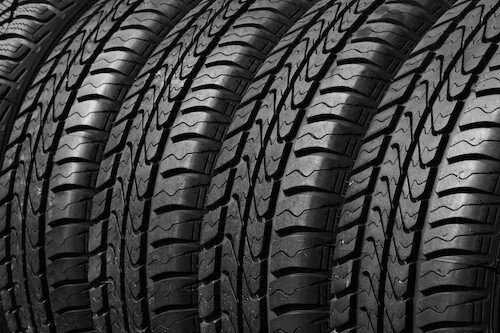RESILIENCE IS NOT LIKE A RUBBER BAND
STOP COMPARING WORKFORCE RESILIENCE WITH A RUBBER BAND
THE ANALOGY IS SERIOUSLY BROKEN
The rubber band is often used as an analogy to describe resilient people.
The comparison is that the rubber band can get stretched and put under pressure but when it stops being stretched it bounces back to its original size and shape.
Elasticity becomes a synonym for resilience. Resilience is described as the ability to stretch yourself when the pressure is on and return safely to your normal shape thereafter – just like the rubber band.
Resilience is NOT about bouncing back – it IS about bouncing forward.
When change is constant when are our employees able to return safely to their normal shape? The pressure is constant, and we need real resilience – not rubber band comparisons.
Let me share with you 5 facts about rubber bands and why we should stop with the analogy.
1. THEY SNAP
Rubber is composed of polymers which are long-chain molecules.
When a rubber band is not being stretched the molecules are tangled up with each other. When the rubber band is stretched, the polymers unwind and become straight.
If you continue to pull the rubber band you are stretching the molecules themselves and you can push the rubber band from elastic to plastic. When stretched too far, it will experience plastic deformation and eventually reach a fracturing point and snap!
Your employees will also snap if stretched too far. You cannot keep expecting more and more of your employees without giving them time, resources and support to find a place where they can destress and increase their resilience.
A broken rubber band, like a broken person, is no use to anyone.
2. THEY DRY OUT
You will have experienced the dried-out rubber band phenomena. You put one around a set of documents and 2 or 3 years later, the rubber band has dried out and broken. It is no longer of use.
Rubber bands can last a long time if natural oil is applied, they are not stretched and they are kept out of the light.
But that is not really practical is it? So, we just throw the dried-out rubber band away and replace it with a new one.
Why are we treating our employees in this way?
If we valued them, we would avoid them becoming brittle and breaking by looking after them.
Tire manufacturers add antioxidants and antiozonants to the tire rubber as the lifetime of the tire is considered critical.
Time, resources and support are the employee’s antioxidant and antiozonant. When we add them into the mix we can avoid degradation.
We throw out the rubber band because it is considered cheap and disposable. We should treat employees like the tire – a valued and critical resource.
Tires are looked after because they support the vehicle; absorb road shocks; transmit traction, torque and breaking forces to the road surface; and change the direction of travel.
In order to do this, they are made of resilient rubber.
Your employees need to absorb the shock of constant and volatile change, move the organisation forward, slow it down and speed it up when needed, and change direction when necessary for progress.
In order to do this, you have to make them resilient.
3. HEAT BRINGS DISORDER
When rubber bands are stretched they release heat energy and when they are retracted they absorb heat energy.
Just like rubber bands, when you stretch your employees they will release heat energy. Keep on stretching them and their energy will become depleted.
They need some time to retract and build up their energy once again.
When a rubber band is stretched and then exposed to heat, it will contract on its own. This increases the entropy – entropy is high when disorder is present.
By turning up the heat, the molecules become disordered and tangled and the rubber band shrinks. It also has trouble returning to its original size and shape.
If we stretch our employees and continue to turn up the heat, we will stretch them beyond their limit and cause permanent damage.
You need to be aware of your employee’s limits and identify when their resilience in the face of constant, uncertain and unprecedented change is being impacted.
Effective intervention and action are needed.
That addresses the effect. You also need to address the cause and stop turning up the heat when your employees are already stretched.
4. VULCANIZED FOR RESILIENCE
Natural rubber is soft and not very resilient. It breaks down easily when over-stretched and it not able to return to its original shape after being stretched.
It is only of use when subject to a process known as vulcanization.
Natural rubber from a tree starts off as white and runny latex. Even when it is set into a product, this latex-based, natural rubber is very squashy, smelly and not very useful at all.
The useful and resilient rubber in rubber bands and tires, is vulcanized. It is cooked with sulphur to make it harder, stronger and longer lasting.
You need to find ways to make your employees stronger and resilient in the face of constant, unprecedented and disruptive change.
Provide them with the time, support and resources they need to increase their resilience.
Remember that building resilience is contextual, individualized and holistic.
There is no one-size-fits-all approach. You cannot yoga your way out of burnout.
You need an approach that meets the needs of every individual in the organization regardless of position, location or tenure.
You need an approach that meets the needs of every individual and the context in which they find themselves. Stress cause by a complex problem will not be resolved with a gym subscription. You need resilient resources including problem-solving, collaboration, and emotional intelligence.
5. KEEP THEM COOL
Rubber bands last longer when refrigerated.
When a rubber band is stretched it expels heat thus shortening its life.
When a rubber band moves from a stretched state to a relaxed state, it cools.
So, rubber bands will last longer when you keep them cool.
The refrigerator for your employees is your program for building employee resilience in the workplace.
Increase their resilience so you can cool the stress, anxiety, fatigue and burnout that is being experienced.
But there is something you need to be careful with.
If you immediately stretch your rubber band when you remove it from the fridge it will weaken significantly because of the rapid change in state.
So, do not commence investing in building the resilience of your workforce and then cast caution to the wind, abandon the intent, and put employees in a high stress situation for which they are not equipped.
This is a situation from which they may never return.
Do not set up your employees for burnout. Burnout is somewhere you don’t want anyone to go, and it is a long, long way back.
SUMMARY
Stop using the rubber band analogy for resilience.
If your employees are akin to a rubber band, they will snap, become depleted of energy, they will dry out and will break down.
Make them resilient and able to cope with stress and anxiety and avoid fatigue and burnout.
Unlike the rubber band, they are not a disposable commodity so do not treat them as one.



